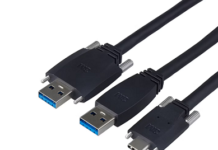Edge AI Chip Market: In the relentless pursuit of smarter and more responsive technology, the focus has traditionally been on raw computational power in massive cloud data centers. However, a pivotal shift is underway, moving intelligence from the core to the periphery: the world of Edge AI. At the heart of this revolution is the Edge AI chip, a specialized semiconductor designed to process artificial intelligence tasks directly on devices, from smart cameras to autonomous robots. The strategic importance and rapid adoption of this technology are reflected in its remarkable market growth; According to a recent market analysis from DataM Intelligence, the Global Edge AI Chip Market reached US$ 7.5 billion in 2024 and is expected to reach US$ 27.1 billion by 2032, growing with a robust CAGR of 17.4% from 2025 to 2032.
Why the Edge is the New Frontier for AI Processing
The limitations of the cloud-centric model latency, bandwidth costs, privacy concerns, and reliability are becoming increasingly apparent for real-time applications. This has propelled Edge AI from a niche concept to a core architectural pillar for modern computing. It directly addresses the critical demands of a connected, intelligent world:
- Ultra-Low Latency: Applications like industrial robotics, autonomous vehicles, and augmented reality require instant decisions. Edge AI chips process data locally, eliminating the round-trip delay to the cloud.
- Bandwidth Efficiency: Transmitting endless streams of raw video and sensor data to the cloud is expensive and inefficient. Edge AI processes this data locally, sending only valuable insights or alerts.
- Data Privacy and Security: Sensitive data, such as video footage or health metrics, can be processed and anonymized on the device itself, never leaving the local network, which enhances security and compliance.
- Operational Reliability: Edge devices must function independently of a constant, stable internet connection. On-device AI ensures continuous operation even in remote or unstable network conditions.
Key Technologies and Architectures Powering the Edge
The Edge AI chip market is not a one-size-fits-all landscape. Innovation is being driven by diverse architectural approaches tailored to different performance, power, and cost requirements:
- Neural Processing Units (NPUs): These are specialized accelerators designed specifically for the parallel computations required by AI algorithms. Integrated into Systems-on-a-Chip (SoCs), they provide a massive boost in performance-per-watt for smartphones, smart cameras, and drones.
- Low-Power System-on-Chip (SoC) Architectures: Companies are designing complex SoCs that combine efficient CPU cores, powerful GPUs, and dedicated NPUs. These all-in-one chips are the engines for a vast range of consumer and industrial IoT devices, balancing performance with stringent power budgets.
- Reconfigurable AI (FPGAs): Field-Programmable Gate Arrays offer hardware-level customization, allowing their logic to be reprogrammed for specific AI models or to adapt to new algorithms post-deployment. This flexibility makes them ideal for prototyping and for applications in fast-evolving fields.
- Analog and In-Memory Computing: Pushing the boundaries of efficiency, emerging architectures perform computations within memory cells themselves or use analog signals. This radically reduces the power consumed by data movement, a key bottleneck, opening doors for ultra-low-power sensors and embedded intelligence.
The Strategic Role of Edge AI Chip Developers
For OEMs and product developers, selecting the right Edge AI chip partner is a decision that defines the product’s capabilities and market potential. The right provider offers more than just silicon; they offer:
- Full-Stack Optimization: Providing a complete suite of hardware and software tools, including optimized AI models, compilers, and software development kits (SDKs) to streamline the development process.
- Power-Performance Expertise: Delivering chips that operate within the strict thermal and power envelopes of edge devices without compromising on intelligence.
- Application-Specific Solutions: Designing chips tailored for the unique demands of key verticals like automotive (functional safety), healthcare (low-power sensing), and industrial automation (real-time control).
Conclusion: Edge AI as a Competitive Imperative
The era of relying solely on cloud-based intelligence is fading. Today, the ability to process data intelligently at the edge has become a defining advantage for next-generation technologies. For professionals in technology design, manufacturing, or strategy, understanding the capabilities and trends of the Edge AI chip market is no longer optional. It is vital for building responsive, secure, and efficient intelligent systems that will shape the future of our connected world.


















